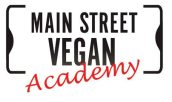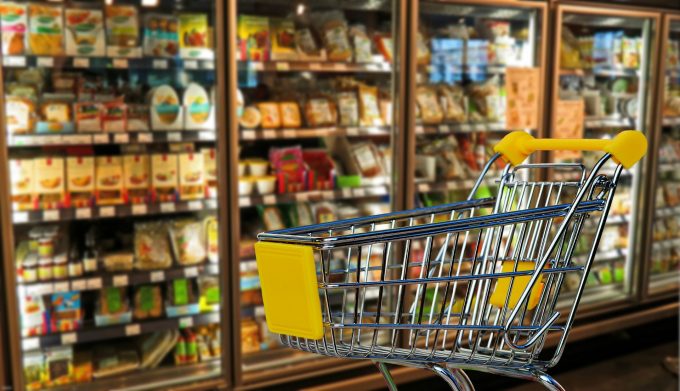The trick to saving money and losing weight is to first learn how to fill your shopping cart the right way. Your kitchen also acts as your gym so it’s important to make sure you shop smart and have the right foods to get healthy and reach your goals. The food you eat has the biggest impact on your health, your body weight, and your wallet. Let’s learn how to correctly use the grocery store while saving money, calories, and improving your time management—all without breaking a sweat!
You’ll want to get familiar with your local grocery stores. Compare prices and what your best options are. You may be bouncing back and forth from different stores for certain items, so don’t be lazy if you want to save money. If you have Sprouts, Trader Joe’s, or Aldi’s, I would recommend trying those first because are usually the cheapest. Whole Foods is usually more expensive, but if you can’t find certain items at other stores, it may be your only option at times. Let’s start with some basic tips to help fill your cart the right way.
- Start Outside and Work Your Way In
Start on the outer edges of the grocery store first and save the middle aisles until last. This means you’ll be starting in the produce and the bulk sections. Make sure to go all around these sections. Your clean eating starts here, Look for what’s in season, sales, and think “rainbow”. This is where you’ll find the natural, non-processed foods. Stock up well with these items first. The foods that are contained in the center aisles are mostly processed, so as a general rule, the less of your food that comes from the center aisles, the better. A lot of bulk items are cheap too; so don’t forget to check them out to compare prices.
If you want to save money on your produce, find a local farmers’ market near you. Farmers’ markets are often cheaper on produce, so if can, take advantage and support the locals. The goal of this plan is to get all your fruits and vegetables for $20 or less per week.
- Scan the Top and Bottom Shelves
When it’s time to go to the center aisles, try to avoid selecting foods from the eye level shelf and focus more on the top or bottom shelves. Many of the larger food companies pay extra money to place their products on eye level shelves, which usually means that more unhealthy and processed foods will be there, and conversely more of the healthy options will be on the top and bottom shelves.
- Read the Ingredients
Always take a look at the ingredients first, even before you look at the calories. Another general rule here is the shorter the list of ingredients, the better because a shorter list of ingredients will tend to have less chemicals overall and therefore be healthier. Look for ingredients that are whole foods—ingredients that you already know what they are without having to Google them. When comparing two items and you can’t decide which is better for you, pick the one that appears to be the least processed.
- When It Comes to Ingredients, Order Is Important
When looking at the list of ingredients on a particular product, look at the order of the list. The first three ingredients listed are typically what they use the most of. If a list says sugar, high fructose corn syrup, or natural sweetener as the first few ingredients, put it back on the shelf!
- Avoid Key Words
It always helps to know marketing strategies of certain key words. These key words are usually expensive because they know how to target an audience. Some key words are “gluten free,” “sugar free,” “natural sweetener,” “fat free,” “no sugar added,” “paleo,” “less fat” and so on… Learn the lingo because it can get tricky! For example, if a product says “less fat,” that may mean only 1 to 2 grams less fat and that the product overall is more processed, contains more sodium or sugar, and cost more money. Another key word to be aware of is “multigrain,” which can mean much of nutritional value was stripped from the product, whereas “whole grain” means the entire grain kernel was used, which is better for you.
- Avoid Packaged Products
Pre-packaged foods are generally not good for you and usually cost more money. Essentially, when packaged and processed, a lot of the nutrient value is stripped away from the foods. Avoid products that are packaged and just eat the real thing versions of that food. For example, instead of eating vegetable chips or drinking fruit juices you’re much better off eating real vegetables or whole fruits. Packaged foods are simply empty calories, lots of sugar, tons of sodium, and cost more money.
For more ideas on how to save money on your grocery bills, eat real foods, lose weight check out my E-Book The Affordable Vegan Diet, $14.99, click here.
 Darlene Adamusik, VLCE is a health & fitness professional with more than 15 years of experience. After transitioning to a vegan lifestyle in 2013 she became extremely passionate about veganism and helping others transition to a whole foods, plant-based diet. She’s a five-time NPC nationally-qualified bikini competitor & has competed in Spartan Races. She’s also had a number of other fun appearances including a feature in Vegan Health and Fitness Magazine. You also may have spotted Darline in “Steve Austin’s Broken Skull Ranch,” “EDGE Booty Extreme 2” DVD, and Beach Body’s “21 Day Fix Extreme” DVD. She even had a cameo on MTV’s “The Real World” when the cast was in…you guessed it…the gym! Darlene’s goal as a nutrition consultant is to give creative, effective, and long-lasting nutrition tips. Connect with Darlene on her website, Instagram, Twitter, Facebook, Youtube, & Pinterest; and catch her on the Main Street Vegan podcast coming up October 19, 2016.
Darlene Adamusik, VLCE is a health & fitness professional with more than 15 years of experience. After transitioning to a vegan lifestyle in 2013 she became extremely passionate about veganism and helping others transition to a whole foods, plant-based diet. She’s a five-time NPC nationally-qualified bikini competitor & has competed in Spartan Races. She’s also had a number of other fun appearances including a feature in Vegan Health and Fitness Magazine. You also may have spotted Darline in “Steve Austin’s Broken Skull Ranch,” “EDGE Booty Extreme 2” DVD, and Beach Body’s “21 Day Fix Extreme” DVD. She even had a cameo on MTV’s “The Real World” when the cast was in…you guessed it…the gym! Darlene’s goal as a nutrition consultant is to give creative, effective, and long-lasting nutrition tips. Connect with Darlene on her website, Instagram, Twitter, Facebook, Youtube, & Pinterest; and catch her on the Main Street Vegan podcast coming up October 19, 2016.

